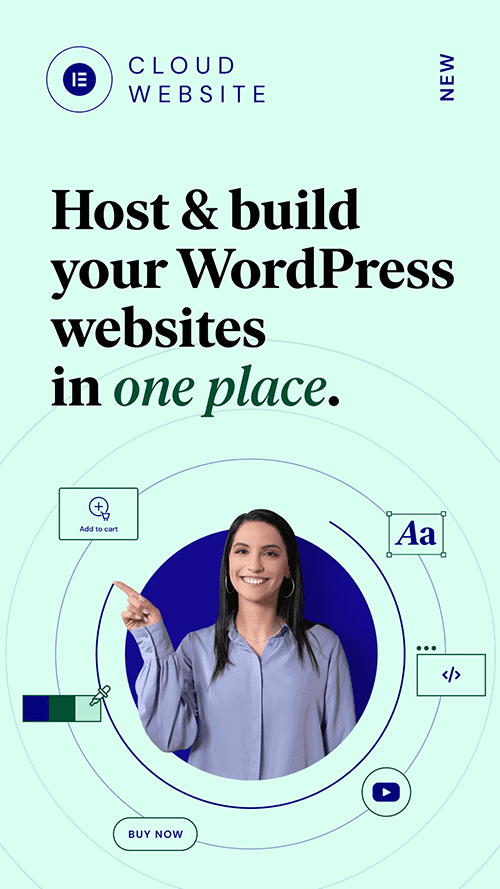In recent years, search engines have been trying to figure out the intent behind each query. This is why user intent is one of the biggest SEO topics in 2023.
The logic behind analyzing the user’s intent is to improve your rankings by figuring out what type of content looks most enticing to your website visitors.
In the early days of Google, the algorithms took keywords out of context, ignoring semantics, slang, culture, etc.
But these days, if you want to rank higher, focusing on user intent will make your website visitors happier by providing the answers to the questions they are looking for.
Buyer personas and user intent
Digital marketers are always researching the main traits of their buyer persona. Tools such as analytics, surveys, and A/B testing are used to understand the pain points of the buyer persona.
Before creating any content for your website, you must understand the language your buyer persona uses, their culture, their tastes, and any type of information that could help you determine what keywords you should use and how to appear trustworthy.
User intent is one of the biggest SEO trends in 2017 because it changes the way website owners create content by asking the following questions:
- What is the age and gender?
- Are they comfortable with buying digital services/products?
- What are their pain points?
- What stops them from purchasing digital products/services (if that is the case)?
- What are their biggest frustrations when interacting with businesses?
Buyer personas not only help you speak the customer’s language by picking the right keywords, but they also increase your conversion rates.
The latest SEO trends focus on personalization, simply because empathic content closes more sales.
When you communicate effectively with your website visitor, you build more trust.
Different types of searches
Understanding the way your buyer persona performs a search and the intent of the search is vital when it comes to picking keywords and tailoring content.
In short, there are 3 types of searches:
- Informational: The user wants to find out more information about a specific topic.
- Transactional: The user uses purchasing keywords while trying to find a specific product/service.
- Navigational: The user is searching for a specific website, actor, singer, etc.
How can you personalize your SEO strategy based on this?
For example, you should target transactional keywords if you are trying to sell a product or a service. However, if your audience is more interested in finding out more information, use informational keywords instead.
What is a keyword and what does it say about how we search for information?
Today’s search engines personalize our searches based on our browsing history, location, information Google can pull out of your Gmail account, and many others.
The only way you can see “the real” (aka raw) results is to browse using anonymous mode. Even so, you cannot get rid of the location filters.
This is how far search engines go to create a better user experience.
Your content should gravitate around the needs of your buyer persona. You do not have to be Sherlock Holmes to deduct the following:
- “Dry cleaning near me” means I am too busy to do laundry, and I earn enough to afford dry cleaning .
- “Best hairdresser for women” means I am a woman, so who is the best hairdresser for me?
- “Acne skin care products” means I am interested in researching products that will make my acne go away.
Try using the same formula for your industry.
Once you figure out who your potential customers are and what their motivations are, it will be far easier to create content that converts more.
Also, now that you know their intentions you can also address their objections, for example, a woman who is searching for acne skin care cream might be concerned about what ingredients are used in her products.
Are the ingredients going to provoke irritations? Are they suitable for every skin type? And so on.
How SEO trends can help you perform a better keyword research
If you are looking to grow your customer base, you should take a look at the latest SEO trends, as trends are based on years of testing and research.
By selecting your audience, you increase your odds of closing more sales. The way this translates to the SEO world is by search terms.
Search queries are questions your users have. Your goal is to answer them.
Internet users use a search engine to find out more about specific topics. This includes information, local places to eat, or where to buy the perfect wedding gown.
One of the biggest SEO trends linked to user intent is semantic search.
The semantic search looks at how each keyword is positioned and what relationships it has with other keywords.
By including semantic search terms, you walk a mile in the shoes of your customer. You also use richer vocabulary that includes synonyms and covers a larger area of search.
Here are a few ways to improve your semantic keyword research while looking at user intent SEO trends:
- Use a set of keywords that offer context to your primary set of keywords. If you are trying to rank for “best skin care products”, you might want to add long-tail keywords too. An example of this would be “best skin care products for oily skin”.
- Use synonyms as well. Instead of using “skin care products”, use “toners”, “creams”, “serums”, etc.
Search engines do their best to provide relevant answers. You are only helping them if you provide more context that offers a deeper understanding of what your website is all about.
By doing this you attract users who are genuinely interested in what you are offering, since search engines take consider search history and other factors of users when displaying results on the first page.
When someone who has been looking for the perfect skincare products lands on your website, chances are that you might close another sale.
Analyze how well your existing content is tailored to user intent
Lately, SEO trends seem to overlap with the psychology of buyer persona and user experience.
User experience expectations are growing because most people have attention spans that are approximately 8 seconds.
You have 8 seconds to use your website design to draw them into your content and convince them to stay.
Ugly bounce rates do not help SEO, and they affect your conversion rates.
To analyze your content’s performance, take a look at what keywords draw more traffic from search engines by accessing Google Analytics.
Sometimes the content is tailored to the user’s needs intuitively by content managers. However, sometimes it does not fit the type of keywords that fulfill the purpose of your website.
If you provide services or are selling products, transactional keywords should be the top performing keywords. And if you are helping people learn more about specific topics, informational topics should be your best performing keywords.
Generally, you do not want to end up with traffic from visitors who are trying to find information about a specific topic on a website where products are sold.
For example, one might search for “acne creams ingredients” to find out more about what ingredients are used in acne creams and whether the cream the user already has will do the trick.
But if you use that keyword on a website where acne creams are sold, you attract a visitor who does not have the intent to buy acne creams. Instead, they just want to find out more about acne ingredients.
SEO trends linked to user intent can help make a real difference in the type of visitors you attract to your website.
Make things easier for your website visitors
Long-form content is often praised by SEO experts. But the truth is that you should be as brief as possible.
Check the reading level of your website content and make sure all your articles are scannable (use many explanatory headlines).
Also, get rid of annoying popups. Do not overcrowd your website with ads, and make it easy for your website user to find your best-performing articles simply by having a list of them one the side.
Another concern is your website responsiveness. Does it look the same on any device?
Most raffic these days comes from mobile devices. Websites that are not mobile-friendly lose a lot of traffic.
Website speed is also very important since the average user expects for a website page to load in at least 2 seconds.
Wrapping up
One of the biggest SEO trends right now is user intent and for a good reason.
By knowing the intentions of your buyer persona, you can tweak your entire website design, performance, content, and SEO strategy to transform your prospects into happy clients.
If you are trying to build an online business, or you just have to attract more clients to your offline business by using your website, do not hesitate to take a look at our blog.
We talk about SEO trends, marketing tactics, monetization, sales automation, and attracting more traffic to your website.







